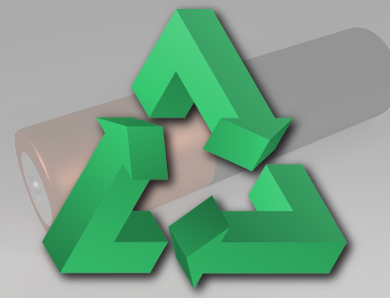Lithium-ion batteries are widely used in portable consumer electronics. They have a limited lifetime, and contain both toxic and valuable metals that should be recycled: not only lithium, but also nickel, cobalt, and mangenese. Inorganic acids such as HCl can be used to leach these metals from spent batteries, but can release toxic gases in the process. Organic acids have been investigated as possible alternatives, but only for the leaching of lithium and cobalt.
Shu-Ying Sun, Jian-Guo Yu, and colleagues, East China University of Science and Technology, Shanghai, have developed an environmentally friendly approach to leaching Li, Ni, Co, and Mn from spent lithium-ion batteries. The team discharged and dismantled used Li-ion batteries, cleaned and dried the recovered cathode materials, and immersed them in an aqueous solution of L-tartaric acid as a leachant and hydrogen peroxide as an oxidizing agent.
With a tartaric acid concentration of 2 mol/L and an H2O2 concentration of 4 vol%, the leaching efficiencies of this system were larger than 98 % for all four metals at 70 °C. The tartaric acid used is cheap, biodegradable, and does not produce toxic gases. According to the researchers, this demonstrates that inorganic acids, which cause secondary pollution, can be replaced without affecting leaching efficiencies.
- Recovery of Lithium, Nickel, Cobalt, and Manganese from Spent Lithium-Ion Batteries Using L-Tartaric Acid as a Leachant,
Li-Po He, Shu-Ying Sun, Yan-Yu Mu, Xing-Fu Song, Jian-Guo Yu,
ACS Sustainable Chem. Eng. 2016.
DOI: 10.1021/acssuschemeng.6b02056




